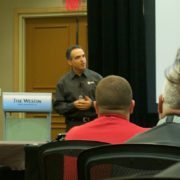Advancing Fluid Analysis with Data

Recently, POLARIS Laboratories® changed how we apply flagging limits to our particle quantifier (PQ) test results. Changes to flagging limits happen fairly regularly as we get new information and reach new data accumulation milestones. The change to the PQ is noteworthy for several reasons, but first let me explain a little more about the test.
PQ is a relatively new test in the oil analysis industry, so there isn’t a lot of historical data to examine. Also, unlike most other oil analysis tests, the results are an “index” with no unit of measurement (like microns or millimeters). Flagging limits are set on the index, and our data analysts compare the test results to the flagging limits to determine severity level and maintenance recommendations.
Until now, the flagging limits were limited to the type of component, like engine or differential. The size, configuration or application was not considered because there wasn’t enough historical data to affect the maintenance recommendations.
After offering PQ testing for several years, we have accumulated enough data to go beyond component type and make maintenance recommendations based on component manufacturer and model, like we do with the majority of our other tests. As you can imagine, contamination does not affect equipment made by different OEMs the same way, so being able to flag PQ by manufacturer and model is expected to improve the accuracy of our maintenance recommendations.
We’re proud of our flagging limits because of the time and effort that goes into this kind of data-driven analysis helps our customers identify wear early, safely extend fluid drains and save money. If you have any questions about PQ or our new flagging limits, please don’t hesitate to call (317.808.3750) or email.
Proven Impact. Proven Uptime. Proven Savings.
Let us prove it to you.







